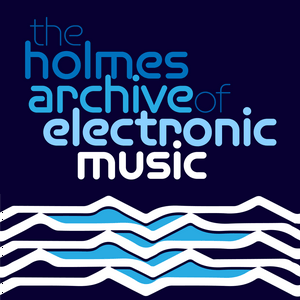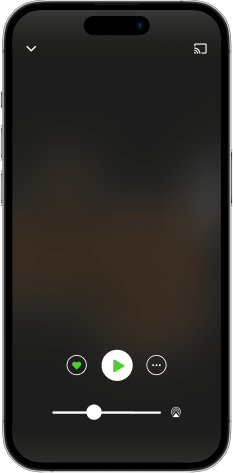Chapter 35, Live Electronic Music— Historical Practices
Episode 176
Chapter 35, Live Electronic Music— Historical Practices. Works Recommended from my book, Electronic and Experimental Music
Welcome to the Archive of Electronic Music. This is Thom Holmes.
This podcast is produced as a companion to my book, Electronic and Experimental Music, published by Routledge. Each of these episodes corresponds to a chapter in the text and an associated list of recommended works, also called Listen in the text. They provide listening examples of vintage electronic works featured in the text.
The works themselves can be enjoyed without the book and I hope that they stand as a chronological survey of important works in the history of electronic music. Be sure to tune-in to other episodes of the podcast where we explore a wide range of electronic music in many styles and genres, all drawn from my archive of vintage recordings.
There is a complete playlist for this episode on the website for the podcast.
Let’s get started with the listening guide to Chapter 35, Live Electronic Music— Historical Practices from my book Electronic and Experimental music.
Playlist: LIVE ELECTRONIC MUSIC—HISTORICAL PRACTICES
Time
Track Time
Start
Introduction –Thom Holmes
01:34
00:00
1. Karlheinz Stockhausen, “Mikrophonie I” (1964) from Mikrophonie I · Mikrophonie II. Mikrophonist 1, Johannes Fritsch; Mikrophonist 2, Harald Bojé; Electronic Filters and Potentiometers 1, Karlheinz Stockhausen; Electronic Filters and Potentiometers 2, Hugh Davies, Jaap Spek; Tam-tam, Aloys Kontarsky; Tam-tam, Fred Alings. Brüsseler Version 1965 recorded at WDR, Cologne.
07:24
01:42
2. AMM, “In The Realm Of Nothing Whatever” (1966) from AMMMusic 1966. Cello, Accordion, Clarinet, Transistor Radio, Lawrence Sheaff; Electric Guitar, Transistor Radio, Keith Rowe; Music by, Cardew, Prévost, Rowe, Sheaff, Gare; Percussion, Eddie Prévost; Piano, Cello, Transistor Radio, Cornelius Cardew; Tenor Saxophone, Violin, Lou Gare. Recorded on the 8th and 27th June 1966 at Sound Techniques.
13:22
09:06
3. Musica Elettronica Viva (MEV), “SpaceCraft” (1967) from MEV 40. Mbira Thumb Piano Mounted On A Ten-litre Agip Motor Oil Can, Contact Microphones, Amplified Trumpet, Voice, Alvin Curran; Amplified Glass Plate With Attached Springs, Contact Microphones, Frederic Rzewski; Homemade Synthesizer from Electronic Organ Parts, Allan Bryant; Moog Modular Synthesizer, Contact Microphones, Voice, Richard Teitelbaum; Tenor Saxophone, Ivan Vandor; Voice, Carol Plantamura.
30:45
22:26
4. David Tudor, “Rainforest Version One” (1968) from Rainforest. Live electronics, David Tudor, Takehisa Kosugi. Used transducers to amplify objects. Recorded by Rob Miller.
21:50
53:10
5. Karlheinz Stockhausen, “Kurzwellen” (1968), excerpt from Festival of Hits. Composed By, Mixed By, Electronics, Filters, Potentiometers, Karlheinz Stockhausen; Electronium, Harald Bojé; Tamtam, Alfred Alings, Rolf Gehlhaar; Piano, Aloys Kontarsky; Electric Viola, Johannes G. Fritsch. This is the opening of this long work, excerpted for this strange collection of greatest “hits” by Stockhausen (you had to be in 1970 to understand this). Kurzwellen is a piece where the musicians need to improvise and react to signals they receive on randomly tuned shortwave radios. This is from the Cologne recording made in the Rhenus studio in Godorf for the Cologne Radio (WDR, Westdeutscher Rundfunk Köln) on the 8th and 9th of April 1969 (53'30), which was record 2 of the original 2-record set. By the way, this ensemble also featured the Electronium Pi, made by Hohner beginning in 1952. It was a monophonic, electronic keyboard instrument and was an add-on instrument for the piano mounted under the keyboard, which is the model used by Stockhausen. His keyboardist, while Harald Bojé used the accordion-like model.
06:19
01:14:56
6. The Music Improvisation Company, “Tuck” (1970) from The Music Improvisation Company. Electric Guitar, Derek Bailey; Live Electronics, Hugh Davies; Percussion, Jamie Muir; Soprano Saxophone, Evan Parker.
03:00
01:21:14
7. David Tudor, “Rainforest IV” (1973) from Rainforest IV. Composed in 1973 by David Tudor; performed by Composers Inside Electronics (David Tudor, Martin Kalve, Philip Edelstein, Ralph Jones, Bill Viola, John Driscoll). Recorded at the exhibition "Für Augen und Ohren - Von der Spieluhr zum akustischen (Environment (For eyes and ears - from the mechanical clock to the acoustic environment)" at the Akademie der Künste, Berlin, January 1980.
25:12
01:24:24
8. Maryanne Amacher, “"Head Rhythm 1" And "Plaything 2" (1999) from Sound Characters (Making The Third Ear). Electroacoustic composer of sound installations, best known for her incorporation of otoacoustic emissions -- sounds that seem to be emanating from inside one's own head. This track plays with that concept and sets your brain up to experience itself, so to speak.
10:04
01:49:36
9. Caroline Park, “Grain 5” (2011) from Grain. This is a cassette release by Park, often known her for generative composition work and electronic improvisations based on parameters that she defines. Recorded, performed by Caroline Park.
09:05
01:59:32
10. Caterina Barbieri. “This Causes Consciousness To Fracture” (2017) from Patterns Of Consciousness. Italian composer and musician from Bologna. This album was created using analog synthesis. Barbieri has said, “In Patterns of Consciousness I was interested in exploring the power of sound on our consciousness. I wanted to explore how a pattern creates a certain state of consciousness and how the gradual transformation of that pattern can affect that state of consciousness. I believe that sound is a tool for the exploration, reconfiguration and expansion of human perceptions.” I find this to be in a similar psychological vein as the Amacher work also heard in this episode.
22:44
02:08:36
11. Sarah Davachi, “First Cadence” (2021) from Antiphonals. Composed, recorded, performed, Mellotron (bass flute, recorder, oboe), Tape Echo, Sarah Davachi.
05:48
02:31:20
12. Asha Tamirisa, “Live Performance,”(2023) at the Waterworks 2023: Festival of Experimental Sound. Laptop synthesis, snare drums, Asha Tamirisa. Soundtrack for a video recorded by Wenhua Shi & Nick Stevens, video editing by Nick Stevens, and audio recording and mixing, Matthew Azevedo.
25:10
02:37:02
Additional opening, closing, and other incidental music by Thom Holmes.
My Books/eBooks: Electronic and Experimental Music, sixth edition, Routledge 2020. Also, Sound Art: Concepts and Practices, first edition, Routledge 2022.
See my companion blog that I write for the Bob Moog Foundation.
For a transcript, please see my blog, Noise and Notations.
Original music by Thom Holmes can be found on iTunes and Bandcamp.


